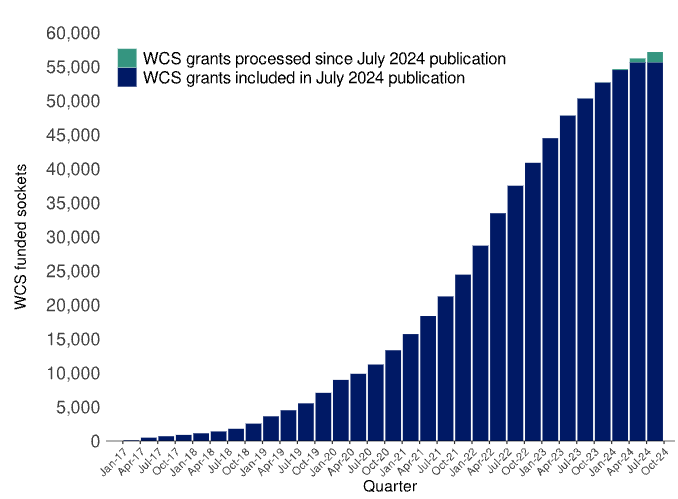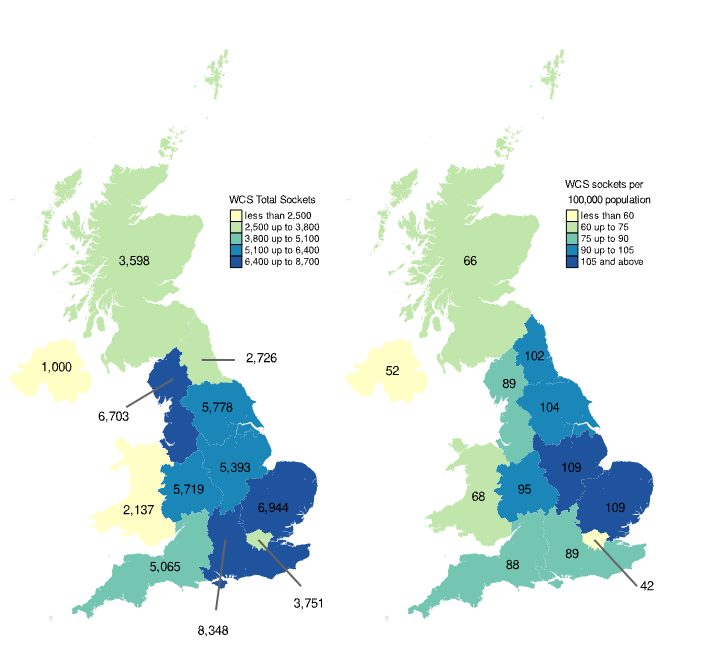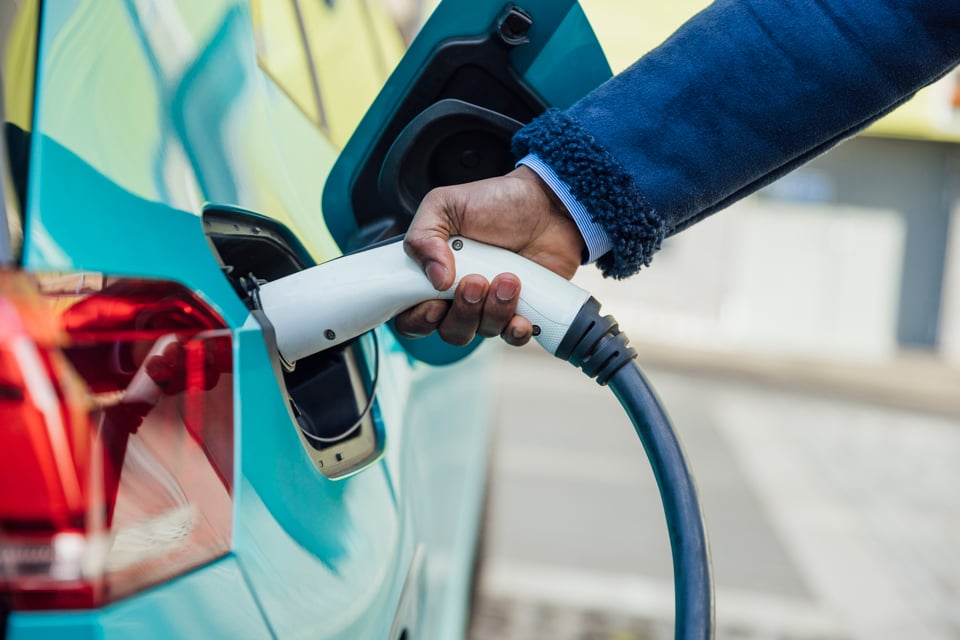The Department for Transport (DfT) funded £21 million worth of workplace chargers in 2023 and the number of installations is nearing 60,000 since the scheme launched in 2016.
The official quarterly statistics from the Office for Zero Emission Vehicles (OZEV) show the workplace charging scheme (WCS) installed 6,819 sockets in the 12 months ending October 2024.
The WCS has seen a steady increase over the last several years from a standing start, with a ramp up since 2020.
The grant was introduced to provide support towards the costs of the purchase, installation and infrastructure of electric vehicle chargepoints at eligible places of work.
The scheme covers up to 75% of the total costs of the purchase and installation of EV chargepoints (including VAT), capped at a maximum of £350 per socket and 40 sockets across all sites per applicant.
For example, if you want to install chargers at 40 sites, a business would have one socket available per site. The WCS is open to businesses, charities, small accomodation businesses, as well as the public sector.
Funding for the WCS is currently confirmed up until March 31 next year.

South East England dominates WCS funding
As would probably be expected, the South East of England had the highest uptake with 8,348 sockets installed while Wales and Northern Ireland had the lowest, 2,137 and 1,000 respectively.
Together, Wales and Northern Ireland accounted for 5.5% of total sockets installed under the WCS in the UK.
The second map shows the number of WCS funded sockets per 100,000 population in each UK region, excluding schools installations.

London had the smallest rate of WCS installations (fewer people commuting to the office in their cars perhaps), with 42 WCS installations per 100,000 population. Scotland, Wales, and Northern Ireland also had fewer WCS installations per 100,000 than any English region except London.
The East of England and the East Midlands have the highest rate of installations for the WCS compared with any other region with both at 109 per 100,000.
On-street charger increase
The On-Street Residential Chargepoint Scheme (ORCS) helped fund 5,722 public charging point installations over the 12 months ending October 2024, with 10,064 projects installed since the scheme's launch in 2017.
Projects completed in the last three months include a total of 92 on-street charging device installations, while funding has also been awarded for 11,300 additional ORCS charging devices. This includes both devices installed, but where projects are yet to complete, and those to be installed in the future.
The ORCS funding goes towards the purchase cost of chargepoints up to 22 kW, the purchase cost of electrical components related to the chargepoint, including distribution network operator (DNO) connection costs, as well as areas like the cost of civil engineering works related to the installation, labour costs and hardware costs too.
- The next OZEV update on charger installations will be available in February 2025. The full OZEV breakdown on its quarterly stats are available here.
- If you're a fleet manager that has been taked with setting up workplace charging, please read Fleet News' handy guide for all you need to know here.
Workplace charging was also a pressing topic of discussion at this year's Fleet and Mobility Live. Register your interest to attend the show in 2025.






















Login to comment
Comments
No comments have been made yet.